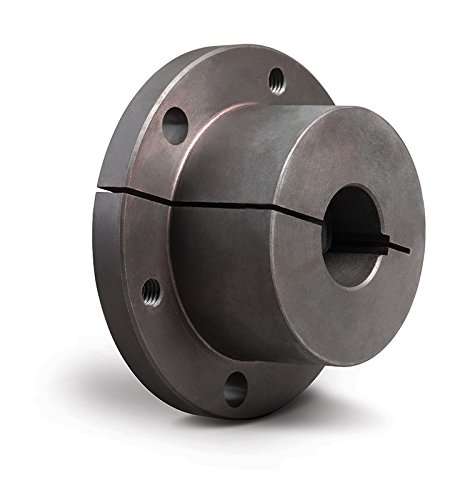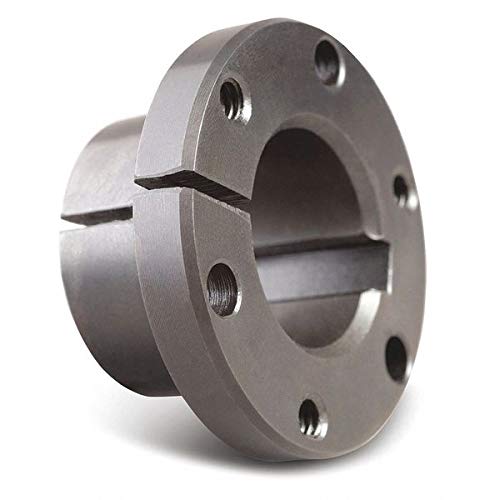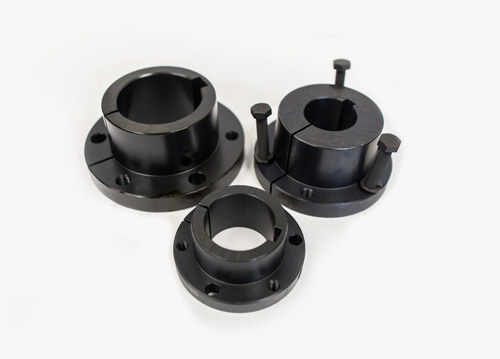Can I find guides on troubleshooting common issues with QD bushings and their solutions?
If you encounter common issues with QD (Quick Disconnect) bushings and need guidance on troubleshooting and finding solutions, there are resources available to assist you. Here are some places where you can find guides on troubleshooting common issues with QD bushings:
- Manufacturer Documentation and Websites: QD bushing manufacturers often provide documentation, user manuals, and technical resources on their websites. These resources may include troubleshooting guides that address common issues encountered with their specific QD bushing models. By visiting the manufacturer’s website or contacting their customer support, you can access valuable information and guidance on troubleshooting problems and finding appropriate solutions.
- Online Forums and Communities: Online forums and communities focused on mechanical systems, power transmission, or industrial equipment can be excellent sources of information and troubleshooting advice. Platforms such as Stack Exchange, Reddit, and specialized forums dedicated to engineering or mechanical maintenance often have knowledgeable members who can provide insights and solutions to common QD bushing issues. Posting specific questions or searching within these forums can help you find relevant discussions and troubleshooting tips.
- Technical Publications and Journals: Technical publications and journals related to mechanical engineering, power transmission, or industrial maintenance may contain articles or case studies that discuss troubleshooting common issues with QD bushings. These publications often provide in-depth analysis, practical recommendations, and real-world examples. Accessing online databases like IEEE Xplore, ResearchGate, or Google Scholar can help you find relevant publications on QD bushing troubleshooting.
- Online Resources and Blogs: Several websites and blogs dedicated to mechanical engineering, maintenance, or power transmission topics offer informative articles and guides on troubleshooting various industrial components. These resources may include specific sections or articles on QD bushings, addressing common issues and suggesting solutions. Websites like Machinery Lubrication, Reliable Plant, or Maintenance Technology can be valuable sources of troubleshooting information.
- Training Courses and Workshops: Some organizations and institutions offer training courses or workshops on power transmission systems, including QD bushings. These courses often cover troubleshooting techniques and provide hands-on experience in identifying and resolving common issues. Checking with local technical schools, industry associations, or professional training organizations can help you find relevant courses or workshops in your area.
It’s important to note that troubleshooting QD bushing issues should be approached with caution and, if needed, performed by trained personnel familiar with the equipment and safety procedures. If you’re unsure or dealing with complex problems, consulting with a qualified engineer or contacting the manufacturer’s technical support is recommended.
By utilizing these resources and seeking expert advice when necessary, you can find valuable guides and solutions to troubleshoot common issues with QD bushings, ensuring their proper operation and minimizing downtime in your mechanical systems.
What are the industry standards for QD bushings, and how do they impact their design and performance?
Industry standards play a crucial role in ensuring the quality, compatibility, and performance of QD (Quick Disconnect) bushings. These standards define the specifications, dimensions, tolerances, materials, and testing requirements that QD bushings should meet. Compliance with industry standards helps manufacturers design and produce bushings that are interchangeable, reliable, and suitable for a wide range of applications. Here are some of the key industry standards for QD bushings and their impact on design and performance:
- ANSI/AGMA 9002-B15: This American National Standard, published by the American Gear Manufacturers Association (AGMA), provides guidelines for the design, selection, and use of QD bushings. It specifies the dimensions, tolerances, and key characteristics of QD bushings, ensuring compatibility and interchangeability between different manufacturers. Compliance with this standard ensures that QD bushings meet the necessary requirements for proper fit and performance.
- ISO 9001: The ISO 9001 standard sets the criteria for a quality management system and is applicable to various industries. Manufacturers that adhere to ISO 9001 demonstrate their commitment to quality control and continuous improvement in their processes, including the design and production of QD bushings. Compliance with ISO 9001 ensures that QD bushings are manufactured consistently and meet customer expectations in terms of performance and reliability.
- ISO 9001: The ISO 9001 standard sets the criteria for a quality management system and is applicable to various industries. Manufacturers that adhere to ISO 9001 demonstrate their commitment to quality control and continuous improvement in their processes, including the design and production of QD bushings. Compliance with ISO 9001 ensures that QD bushings are manufactured consistently and meet customer expectations in terms of performance and reliability.
- ASTM F2437: ASTM F2437 is a standard specification for carbon and alloy steel external helical, integral locking teeth, and internal straight thread QD bushings. It provides detailed requirements for the materials, dimensions, hardness, and performance characteristics of QD bushings made from carbon and alloy steel. Compliance with this standard ensures the structural integrity and mechanical properties of QD bushings made from these materials.
- Manufacturer-Specific Standards: Some QD bushing manufacturers may have their own internal standards and specifications that go beyond the industry standards. These manufacturer-specific standards can include additional design features, materials, or performance criteria to meet specific customer requirements or to address unique applications. Manufacturers adhering to their own standards demonstrate their commitment to product excellence and innovation.
The impact of industry standards on QD bushing design and performance is significant. By adhering to these standards, manufacturers ensure that their QD bushings are compatible with other industry-standard components, allowing for interchangeability and ease of integration into various mechanical systems. Designing to these standards also helps optimize the performance and reliability of QD bushings by establishing guidelines for critical factors such as dimensions, tolerances, and material properties.
Industry standards foster consistency and reliability in QD bushing manufacturing, enabling customers to have confidence in the performance and quality of the products they purchase. They also facilitate easier sourcing, replacement, and maintenance of QD bushings since standardized dimensions and specifications allow for direct interchangeability.
It’s important for manufacturers, designers, and end-users to be familiar with the relevant industry standards for QD bushings and ensure that the bushings they select or produce comply with these standards. By doing so, they can ensure proper compatibility, reliable performance, and optimal functionality of QD bushings in their applications.
Can I get step-by-step instructions on installing QD bushings for different mechanical setups?
While I can provide a general overview of the installation process for QD bushings, it’s important to note that the specific installation steps can vary depending on the mechanical setup and the manufacturer’s guidelines. It is recommended to consult the manufacturer’s instructions and specifications for the specific QD bushing you are using. However, here is a general outline of the steps involved in installing QD bushings:
- Gather the necessary tools and equipment: Before you begin the installation process, ensure you have the required tools and equipment on hand. This may include wrenches, torque wrenches, a mallet or hammer, and any additional components or accessories specified by the manufacturer.
- Prepare the shaft and the mounting component: Clean the shaft and the inner bore of the mounting component to remove any dirt, debris, or old lubricants. Ensure that the shaft surface is smooth and free from any damage or burrs that could interfere with the installation process.
- Inspect the QD bushing: Before installing the QD bushing, inspect it for any visible damage or defects. Ensure that the tapered surfaces and the flange are clean and free from any debris that could affect the installation or the connection with the shaft and the mounting component.
- Position the QD bushing: Place the QD bushing over the shaft, ensuring that it aligns properly with the desired location on the shaft. The flange of the bushing should be facing the mounting component.
- Engage the QD bushing: Apply even pressure to the outer surface of the QD bushing to initiate the engagement. This can be done using a mallet or hammer. Ensure that the bushing is centered and properly seated on the shaft. Avoid applying excessive force that could damage the bushing or the shaft.
- Tighten the QD bushing: Using the specified torque value provided by the manufacturer, tighten the QD bushing by turning the tightening screws or bolts evenly. Follow the recommended tightening sequence provided by the manufacturer to ensure an even and secure connection. Be careful not to over-tighten the bushing, as this can cause damage.
- Verify the installation: After tightening the QD bushing, inspect the connection to ensure that it is secure and properly aligned. Check for any axial movement or play between the bushing, shaft, and mounting component. Verify that the mounted component is positioned correctly and securely fastened to the bushing.
- Complete the installation: Once you have verified the installation, proceed with any additional steps required for your specific mechanical setup. This may involve attaching other components, aligning belts or chains, or performing any necessary adjustments or calibrations.
It’s important to note that the above steps are a general guide and may not cover all possible scenarios or variations. Always refer to the manufacturer’s instructions and guidelines specific to the QD bushing you are using. Following the manufacturer’s recommendations will ensure proper installation and optimal performance of the QD bushing in your mechanical setup.
editor by CX 2023-12-25




